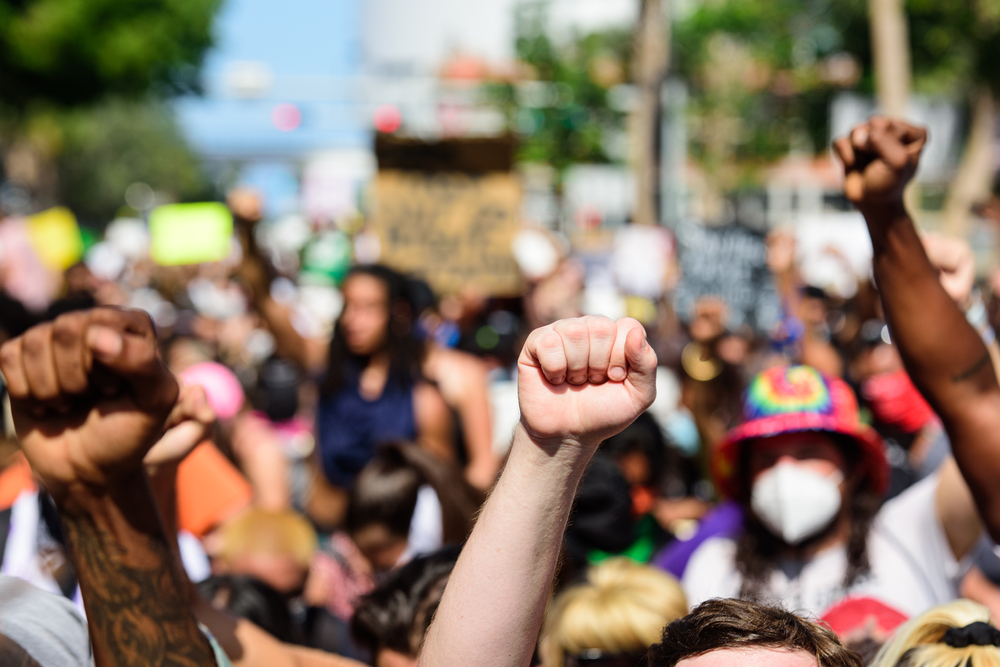On April 10, 2025, Argentina witnessed a nationwide general strike led by the General Confederation of Labor (CGT), marking the third such protest during President Javier Milei’s 16-month tenure. The 24-hour strike disrupted key sectors, including transportation, banking, education, and public services, reflecting widespread dissent against the government’s stringent austerity policies.
Widespread Disruption Across Sectors
The strike brought significant portions of Argentina’s infrastructure to a standstill:
- Transportation: Trains and subways ceased operations, flights were grounded, and grain shipments from the crucial Rosario port hub were halted.
- Public Services: Banks, schools, and government offices closed, while hospitals operated with minimal staff, attending only to emergencies.
- Economic Impact: The government estimated the economic loss from the strike at approximately $880 million.
Despite the widespread participation, some services remained operational. For instance, certain bus lines continued to run, and many cafes and shops in Buenos Aires stayed open, indicating a mixed response to the strike.
Union Demands and Government Response
The CGT and other labor unions organized the strike to protest against:
- Massive Public Sector Layoffs: Over 42,000 state employees have been dismissed since President Milei took office.
- Pension Cuts: Retirees have seen their pensions reduced to approximately $300 per month, losing significant value due to inflation.
- Privatization Plans: The government’s intent to privatize state-owned enterprises, including Aerolíneas Argentinas, has raised concerns about job security and service accessibility.
Union leaders are demanding the reinstatement of dismissed workers, reopening of salary negotiations, and a halt to privatization initiatives.
In response, the government has dismissed the strike as politically motivated. Presidential spokesperson Manuel Adorni labeled the protest as an attack on the republic, asserting that it serves political interests rather than the workers’ welfare.
Potential Ramifications for the United States
Observers in the United States have also expressed concern about potential ripple effects from the Argentine strike. As one of the largest importers of Argentine agricultural products—particularly soy and corn—the U.S. could see disruptions in supply chains and potential spikes in commodity prices if work stoppages persist. Moreover, American businesses with investments in Argentina may face heightened uncertainties regarding labor stability and future government policies, which could dampen investor confidence. Financial analysts note that a protracted conflict in Argentina might also reverberate through the broader Latin American market, creating volatility that could indirectly influence U.S.-based multinational corporations and trade agreements.
- Supply Chain Disruptions: As one of the largest importers of Argentine soy and corn, the U.S. could experience delays and shortages if transportation and export channels remain shut down, potentially impacting food processors and livestock feed suppliers.
- Commodity Price Fluctuations: Prolonged strikes might drive up prices for agricultural goods, rippling through global commodity markets and affecting American consumers and businesses that rely on stable input costs.
- Investment Uncertainty: U.S. businesses with stakes in Argentina—ranging from agriculture to manufacturing—could see projects delayed or reconsidered due to concerns about labor stability and the government’s response to strikes.
- Regional Market Volatility: Financial analysts warn that a protracted conflict in Argentina could lead to broader economic turbulence across Latin America, indirectly influencing U.S.-based multinationals with operations or trading partnerships throughout the region.
- Trade Agreement Pressures: Any sustained upheaval might also affect existing or future trade deals between the U.S. and Latin American nations, as negotiators consider new safeguards against potential labor disruptions.
Economic Reforms and Social Impact
President Milei’s administration has implemented aggressive economic reforms aimed at eliminating the fiscal deficit and stabilizing the economy. These measures include:
- Subsidy Cuts: Reduction in government subsidies across various sectors.
- Public Sector Downsizing: Significant layoffs and restructuring of government departments.
- Deregulation: Removal of price controls and liberalization of the economy.
While these policies have led to a decrease in inflation—from 211% in December 2023 to 118%—and a shift from budget deficits to surpluses, they have also resulted in increased poverty and social unrest. The poverty rate, which peaked at 57.4% in January 2024, has since decreased but remains a pressing issue.
Labor Market Reforms and Legal Challenges
President Milei’s administration has pursued significant labor market reforms aimed at increasing flexibility and reducing costs for employers. Key initiatives include:
- Reduction of Severance Pay: Modifying dismissal terms to lower compensation obligations for employers.
- Healthcare Choices: Allowing workers to choose their healthcare providers, reducing union control over health benefits.
- Protest Regulations: Implementing measures to limit permanent traffic obstructions during protests.
These reforms, part of the broader “Megadecreto,” have faced legal challenges. In January 2025, Argentina’s national labor appeals court temporarily suspended several labor reforms, citing concerns over their enactment without congressional approval. The court’s decision underscores the contentious nature of these reforms and the legal hurdles the administration faces in implementing its agenda.
Privatization Efforts and Public Response
The government’s push to privatize state-owned enterprises has been a focal point of public debate. Proposed privatizations include:
- Aerolíneas Argentinas: The national airline, with concerns about job losses and service reductions.
- Energy Sector: Plans to privatize parts of the energy industry, raising fears about increased costs and reduced access.
Public response has been mixed, with significant opposition from labor unions and segments of the population worried about the social implications of privatization. Protests and strikes have been organized to voice dissent, reflecting the contentious nature of these initiatives.
International Involvement and Future Outlook
Amidst domestic challenges, Argentina has secured a $20 billion bailout package from the International Monetary Fund (IMF), pending final approval. This agreement aims to bolster the country’s foreign exchange reserves and support the government’s economic reform agenda.
However, the IMF deal has rekindled memories of Argentina’s financial crises in the early 2000s, leading to skepticism among the populace. Critics argue that the austerity measures tied to the bailout disproportionately affect the poor and vulnerable.
As the government continues to implement its reform policies, further labor actions and public demonstrations are anticipated. The administration’s ability to balance economic stabilization with social equity will be crucial in determining Argentina’s path forward.
Historical Overview of Labor Movements in Argentina
Argentina’s labor movement has long been shaped by social, political, and cultural currents. During the early decades of the twentieth century, rapid industrialization saw the emergence of significant labor organizing efforts, particularly in urban centers such as Buenos Aires, Rosario, and Córdoba. Over time, the labor landscape expanded as unions played an increasingly influential role in the governance of the nation, culminating in the Peronist era that began in the mid-1940s.
Juan Domingo Perón recognized the power of organized labor and positioned himself as a champion of workers’ rights, forging a unique alliance between the government and unions. The CGT (Confederación General del Trabajo) became an essential institution under Perón’s guidance, helping secure advances such as paid holidays, improved wages, and broader worker protections. Even after subsequent regimes distanced themselves from Peronist populism, the CGT maintained a central role in labor negotiations and political mobilization.
Throughout the 1970s and 1980s, Argentina’s labor movement faced challenges posed by military dictatorships and neoliberal experiments. Unions often served as sites of resistance, organizing against human rights abuses and economic measures that undercut wages and social protections. The 2001-2002 economic crisis saw renewed protests and widespread social upheaval, setting the stage for further transformations in the labor sphere. Although Argentina recovered in the mid-2000s, cyclical inflation and debt management issues persisted, fueling ongoing tensions between governments prioritizing austerity and unions defending worker benefits.
By 2025, the CGT remains one of the most powerful labor federations in Latin America. Its general strikes, like the one on April 10, highlight enduring discontent with government reforms that are perceived as threatening to the workforce. While each era has its own unique dynamics, the fundamental clash—between a government intent on revamping the economy and a populace wary of losing hard-won gains—remains a consistent thread through Argentina’s labor history.
Socioeconomic Context Leading to the 2025 General Strike
In order to fully understand the implications of the April 10, 2025, general strike, one must first appreciate the economic and social conditions that set the stage. Over the past decade, Argentina has battled recurrent issues: high inflation, volatile currency markets, and a national debt that often flares into crisis mode. Amid these challenges, concerns over unemployment and decreasing real wages ignited fears of a declining standard of living.
President Javier Milei, who took office in late 2023, presented a plan centered on eliminating subsidies, reducing the public sector workforce, and liberalizing trade regulations. Proponents hailed these moves as pragmatic attempts to break free from an entrenched cycle of government overspending. Critics, however, warned that slashing public services and deregulating key industries too rapidly could worsen inequality, weaken social safety nets, and marginalize vulnerable communities.
From the vantage point of many Argentines, the administration’s measures also threatened traditions of strong organized labor. When wages fail to keep pace with skyrocketing costs, the prospect of union-led mobilizations grows significantly. Moreover, the government’s attempts to privatize state-owned enterprises, particularly in sectors like energy and transportation, touched off heated debates regarding job security and equitable access to essential services. Taken together, these developments generated a climate ripe for high-profile protests, culminating in the nationwide strike called by the CGT.
Beyond domestic concerns, global factors also shaped Argentine economic prospects. A sluggish international commodities market, fluctuating currency values, and stringent conditions attached to foreign loans put additional pressure on Milei’s administration. In this sense, the April 10 strike was not merely a localized phenomenon but part of a broader intersection between national policy and international economic headwinds.
Key Players and Stakeholders: Government, Unions, and the Public
At the heart of Argentina’s 2025 general strike lie three main stakeholder groups, each wielding substantial influence and bearing unique interests in the country’s future direction.
- Government Officials and Policymakers
President Milei’s cabinet has ardently defended the austerity and market-oriented reforms, depicting them as indispensable for restoring fiscal health. Many in Milei’s inner circle are economists and technocrats who view state downsizing as a non-negotiable step in stabilizing Argentina’s finances. Public pronouncements from these officials often underscore the necessity of attracting foreign investment by showcasing policy discipline, clarity in regulations, and a departure from the inflationary cycles of previous decades. - Labor Unions and Workers
The CGT orchestrates much of the labor resistance, articulating the demands of both public and private sector workers. The union contends that the government’s reforms unfairly burden low- and middle-income earners, while large businesses and affluent individuals enjoy disproportionate benefits. Beyond wage and pension concerns, labor groups worry about the erosion of collective bargaining power, the expansion of temporary contracts, and the privatization of previously secure public sector positions. - The Argentine Public
Ordinary Argentines—ranging from white-collar professionals in Buenos Aires to small-scale farmers in the interior—have found themselves on uncertain footing. Many are torn between their desire for a stable economy and the recognition that austerity can lead to social hardship, especially for pensioners and the unemployed. Large segments of the population also recall previous IMF interventions and economic collapses. These historical memories shape the discourse around external bailout packages and evoke anxieties over a return to “lost decades” of debt-driven policy.
Additionally, local business owners, entrepreneurs, and investors track developments carefully. Some see opportunity in an open-market environment and anticipate that privatization will elevate efficiency and competition. Others worry that union upheaval could damage consumer confidence and drive away foreign capital. As all these groups converge in the dispute over the April 10 strike, the complexity of the situation becomes apparent: each faction possesses both the power to influence public policy and the vulnerability to suffer from ill-timed or poorly communicated reforms.
The Strike’s Ripple Effects on Infrastructure and Critical Industries
The CGT’s call for a 24-hour work stoppage on April 10 reverberated across multiple industries, revealing both the vulnerabilities and the resilience of Argentina’s core economic sectors.
Transportation and Logistics
In a nation heavily reliant on the movement of agricultural products, halting trucks, trains, and cargo ships can rapidly translate into significant financial losses. The strike led to backlogged shipments, delayed deliveries, and mounting tensions at key export terminals, especially near Rosario. International importers of Argentine soy, corn, and wheat expressed unease about the reliability of supply chains if strikes continue or reoccur. Urban transportation networks, including subways and commuter buses, went offline or operated sporadically, disrupting daily commutes in metropolitan regions.
Aviation and Ports
Buenos Aires’s Ezeiza International Airport typically handles thousands of passengers daily, many of them tourists and business travelers. A large-scale walkout among airport staff and air traffic controllers resulted in flight cancellations and detours. Airline operators complained of escalating logistical costs and potential reputational damage. Meanwhile, ports on the country’s Atlantic coast struggled to fulfill cargo schedules, which had an immediate effect on revenue and trade relations.
Public Services and Education
Government offices, banks, and schools were either closed or operated at minimal capacity, leaving everyday business transactions and essential services in disarray. For many working families, the simultaneous shut-down of education systems and local transport became a significant burden, particularly for those with children in public schools. Hospitals and health clinics, forced to operate with only emergency staff, also highlighted the severity of the protest’s impact on basic social services.
Agricultural and Energy Sectors
Although not all farmers joined the strike, many faced roadblocks or logistical constraints when trying to transport goods. Similarly, the energy sector experienced disruptions, with some state-run facilities suspending non-essential operations. Plans for partial privatization in the energy sector contributed to worker discontent, reflecting broader anxieties about job stability and fair distribution of resources.
The multifaceted nature of these disruptions illustrates how a single-day strike can hold profound implications for Argentina’s economic infrastructure. Business groups quickly pressed the government to engage in dialogue, warning that repeated unrest would erode investor confidence. Simultaneously, union leaders seized the momentum, framing the widespread standstill as evidence of public support for their cause.
Government Strategies and Policy Reactions
Facing sharp criticism and large-scale demonstrations, the Milei administration adopted several strategies to manage the fallout. First, high-level officials engaged in a public relations campaign to underscore the need for fiscal prudence. Economic ministers appeared frequently on local media, spotlighting reduced inflation figures and promising that austerity would eventually pave the way for sustainable growth. They also hinted at targeted assistance for the most affected, emphasizing that no society can progress without short-term sacrifices.
Second, the administration sought to strengthen alliances with pro-business think tanks and international partners. By portraying the strike as a politically motivated move, aligned with opposition parties looking to score political points, government spokespeople argued that union leaders were more focused on preserving outdated economic models than embracing the structural changes that global markets demand. This narrative attempted to marginalize the CGT, suggesting that their leadership was out of touch with modern realities.
Third, the President’s office mandated a series of negotiations with moderate labor sectors, hoping to dilute the CGT’s influence. These talks revolved around potential concessions, like phased implementation of privatizations, incremental adjustments in pension rates, or temporary wage subsidies in certain industries. By selectively awarding benefits to less militant factions, government negotiators attempted to sow division among the various arms of the labor movement.
Lastly, judicial challenges to proposed labor reforms slowed down certain aspects of Milei’s agenda. Courts ordered reviews of the constitutional implications of the so-called “Megadecreto,” forcing the administration to either revise or justify specific clauses around severance pay and union autonomy. Despite these setbacks, Milei’s team remained largely consistent in presenting austerity and deregulation as indispensable cures for Argentina’s entrenched economic ailments.
Public Sentiment and the Role of Social Media
In the digital age, social media platforms—particularly Twitter, Facebook, and Instagram—play a pivotal role in shaping public sentiment. In the days leading up to the April 10 strike, hashtags related to labor rights, pension cuts, and privatization began trending in Argentina, with union supporters amplifying calls for solidarity. Workers posted testimonies about the hardships they faced—such as stagnant wages or sudden job termination—while government allies emphasized the perceived necessity of “modernizing” the nation’s economic framework.
Some influencers and celebrities took sides, drawing more attention to the looming conflict. Videos capturing empty subways, deserted streets, and picket lines circulated widely, reinforcing the magnitude of the mobilization. Polls conducted online suggested that many Argentines felt torn between sympathy for public sector employees and disillusionment with chronic economic turmoil. Social media also served as an organizing tool, enabling swift communication among regional union branches and grassroots organizers who coordinated marches, rallies, and peaceful blockades.
International observers—activists, economists, and journalists—utilized social networks to draw parallels with historical labor strikes in Argentina and beyond. These external voices sometimes stirred heightened reactions among domestic audiences, either bolstering labor’s argument against austerity or reiterating the administration’s stance that Argentina must “join the twenty-first century.” Ultimately, social media chatter highlighted the complexities of the situation, showcasing both the broad dissatisfaction with ongoing austerity measures and pockets of support for a government seeking to rectify the nation’s prolonged financial instability.
The Broader Political Climate and the Influence of Opposition Parties
Argentina’s general strike took place against a backdrop of political polarization. Opposition parties, primarily leftist and Peronist factions, used the event to spotlight the perceived flaws in Milei’s economic blueprint. Some lawmakers introduced legislative proposals aimed at preventing future layoffs in the public sector and mandating stricter regulations around privatization processes. Their objective was to pressure President Milei to reconsider the speed and scope of his reforms.
Meanwhile, center-right coalitions that had initially supported parts of Milei’s program became wary of the mounting social unrest. Some politicians, eager to preserve their own political capital, distanced themselves from the more extreme austerity measures. As municipal and provincial elections loomed on the horizon, local candidates weighed whether to embrace the official stance or to adopt a more nuanced view that recognized the plight of affected workers.
With so many competing voices, the Argentine Congress found itself in a stalemate on certain critical bills. Milei’s administration continually insisted that halting or reversing reforms would send negative signals to international creditors. The IMF bailout package, which hinged partly on demonstrating a commitment to reducing public expenditures, remained a core topic of debate. Critics of the bailout argued that it forced an overreliance on external financing, inevitably leading to repeated episodes of drastic cuts whenever macroeconomic indicators worsened.
These conflicts highlight the delicate balance that any Argentine administration must navigate—fostering an environment conducive to investment and economic diversification while maintaining social cohesion and upholding worker protections. Given the robust influence of unions and the historical role of Peronism, it was perhaps inevitable that the path toward liberalization would face formidable resistance.
Potential Long-Term Repercussions on Argentina’s Economy
While the direct economic impact of the April 10 strike was felt almost immediately—through flight cancellations, port blockages, and commercial shutdowns—its long-term consequences are more nuanced. If repeated strikes become the norm, investor confidence may waver. Projects requiring large capital outlays, particularly in infrastructure, energy, and technology, could be postponed or canceled if corporations deem the environment too volatile or unpredictable.
On the other hand, the strike also underscored the critical role of domestic consumption and stable labor relations. If wage stagnation persists, the broad consumer base that underpins Argentine retail, tourism, and services could shrink. From a macroeconomic viewpoint, balancing business-friendly policies with safeguards for worker rights is crucial. A stable, well-paid workforce typically contributes to robust consumer demand, ultimately buoying economic growth. Striking this balance has been a perennial challenge for Argentina, which has historically veered between populist expansions and neoliberal contractions.
Another potential repercussion involves the political capital of President Milei. Prolonged unrest could erode the administration’s standing and invite more robust challenges in upcoming elections. If the government’s approach to austerity is perceived as inflexible or overly harsh, moderate factions may pivot toward alternative proposals that promise both stability and a more gradual transition. In turn, this could alter Argentina’s legislative landscape and shape policy debates for years to come.
Path Forward: Negotiations, Reforms, and Future Projections
In the aftermath of the April 10 strike, government and union representatives have hinted at a possible round of negotiations. While both sides remain entrenched in their respective positions, there are potential areas of compromise:
- Gradual Implementation of Austerity: The government could phase in certain austerity measures more slowly, providing time for businesses and workers to adapt. This approach might include postponing some layoffs, extending transition periods for privatizations, and adding social protections for the most vulnerable.
- Targeted Social Programs: Unions have advocated for specific interventions to cushion the blow of cuts—such as emergency subsidies for retirees or retraining programs for dismissed public sector employees. Success with these programs could ease public anxiety and defuse tension in the short term.
- Transparent Policy Communication: One of the recurring criticisms of President Milei’s administration is the perceived lack of transparency around reform timelines and outcomes. Enhanced communication, along with measurable benchmarks for economic improvements, could restore some trust among the populace.
- Judicial Oversight: Courts reviewing elements of the “Megadecreto” may issue rulings that constrain the government’s ability to push through rapid, sweeping reforms without legislative input. By recognizing this judicial oversight, both sides could reach more balanced, legally sound agreements.
- Constructive Engagement with the IMF: Successful negotiations with the IMF to allow greater flexibility in deficit targets might reduce immediate pressures on public spending. While past IMF programs have drawn criticism, a more nuanced set of conditions—incorporating social impact assessments—could lessen the shock to workers and communities.
Whether these proposals materialize depends heavily on political will. Hardliners in Milei’s coalition may resist diluting austerity, while union factions might insist on uncompromising demands. Nevertheless, some form of middle ground will be essential if Argentina hopes to avoid repeated upheavals that could stall the economy and deepen social divisions.
The Ongoing Struggle for Economic and Social Balance
The April 10, 2025, general strike stands as a stark reminder of Argentina’s enduring quest for equilibrium between state-led protections and free-market reforms. Neither the unions’ stance nor the government’s position can be reduced to simplistic caricatures; both reflect deeply rooted beliefs about how to ensure security, prosperity, and dignity for millions of Argentines.
President Milei and his allies emphasize that Argentina has repeatedly fallen victim to excessive government spending, mismanagement, and populist policies that led to catastrophic debt levels. Their drive to streamline state operations and open up markets is, in their view, the only viable path out of a decades-long cycle of crises. Meanwhile, labor leaders, civil society advocates, and ordinary citizens regard these austerity measures as an assault on hard-won gains that could fracture social cohesion, drive up poverty, and funnel wealth into ever-narrower circles of society.
Looking ahead, it remains unclear whether meaningful compromises will emerge or if the country will continue to oscillate between protest and crackdown, prosperity and crisis. The interplay of global economic conditions, domestic politics, and the fervent defense of national identity ensures that Argentina’s path forward will be anything but straightforward. As the government weighs the next steps in its ambitious reform program—and as unions prepare for the next potential wave of demonstrations—Argentina stands at a juncture, choosing between inclusive growth and divisive austerity.
For now, the reverberations of the April 10 general strike are certain to shape policy debates and social consciousness in the months and years to come. Much hinges on whether the administration can deliver on its promises without sacrificing the fundamental social protections that so many Argentines consider non-negotiable. In this ongoing saga, only time will reveal the true long-term legacy of this historic moment in Argentina’s labor movement.









